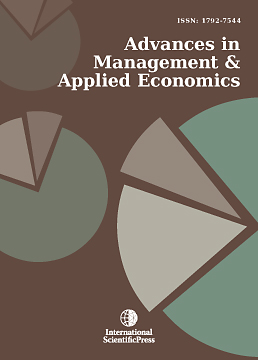Advances in Management and Applied Economics
Dutch Disease and Changes of the Productive Structure in Moroccan Economy. An Analysis Using VECM
-
 [ Download ]
[ Download ]
- Times downloaded: 10667
-
Abstract
The term Dutch Disease is not new but it always remains an updated notion due to the expansion of capital flows coming from the export of natural resources that can produce reverse effects on the economy of rich countries in these resources. Indeed, this situation can lead, in the case of a developing country, to a contraction of sectors producing tradable goods apart from the booming sector, and the development of sectors producing non-tradable goods. However, several authors highlight the existence of a similarity between the increase in incomes coming from the exploitation of natural resources, the transfers of the foreign residents, the foreign assistance and tourist receipts.
In this paper, we will study the theory of the "Dutch Disease" to analyze the phenomenon of the deindustrialization which characterizes the Moroccan economy within the last decades, considering the importance of the shares that have these resources in the Moroccan GDP, in order to give recommendations to neutralize its effects.
After a brief talk on the contents and the theoretical statue of the Dutch Disease models, we will proceed, on the basis of empirical checking, to a critical analysis of the theory using a Vector Error Correction Model VECM, aiming to identify the transmission channels of the Dutch Disease in the Moroccan economy and explain the challenges with which industrialization is confronted.
